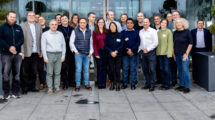The FileSender user interface can at present be used in 27 languages, all contributed by the wider FileSender community. By default, the interface is presented in English, but increasingly many translations are being supplied by the National Research and Education Networks (NRENs) who wish to support their domestic R&E communities in the national language.
FileSender aims to be a widely deployed platform enabling anyone to easily and securely transfer files of any size from any person or machine to any other person or machine. FileSender explicitly targets mass usage and is built to service the 99% of users who have better things to do with their time than figuring out how to perform large file transfers.
FileSender supports international character sets, which means that languages using the Cyrillic alphabet or Asian languages can be integrated into FileSender without undue effort. Here is the list of 27 languages, for which at least 75% of the required translation work was completed:
- Chinese (simplified) (zh-Hans)
- Chinese (traditional) (zh-Hant)
- Croatian (hr)
- Czech (cs)
- Danish (da)
- Dutch (nl)
- English (en)
- English (Australia) (en-au)
- Estonian (et)
- Finnish (fi)
- French (fr)
- German (de)
- Italian (it)
- Japanese (ja)
- Korean (ko)
- Nepali (ne)
- Polish (pl)
- Portuguese (Brazil) (pt-br)
- Serbian (sr)
- Sinhalese (si)
- Slovenian (sl)
- Spanish (es)
- Tamil (ta)
- Thai (th)
- Turkish (tr)
- Urdu (ur)
- Vietnamese (vi)
NRENs tend to be well motivated to contribute a translation for a combination of factors. First off, and most importantly, providing a translation makes for a better end-user experience. While it is true that many R&E community member have very decent command of English, a customer-oriented NREN will still prefer to offer their services in the domestic languages as well. In doing so they remove any potential confusion and stress as may be experienced by users with less than perfect IT or language skills. Still, if it were very hard to provide language localisation, many NRENs might balk at the prospect. Fortunately this is where factor #2 comes in: FileSender is completely ready to enabled translation and localisation (l10n in the lingo), making the production and integration of a new language profile into FileSender a smooth, low-cost process.
“We are very happy with FileSender as a service. It is simple to implement and simple to explain. We have good user uptake on FileSender, which we operate both as a normal, open FileSender and in a special version for use with digital exams. Our FileSender is configured to use the language setting from the user’s browser. We believe this really creates the best value for the users. We are a Danish national network paid for by public money. Although it is not required by law or otherwise to have every text on every service in the national language, it is after all natural to us” – Martin Bech, Head of NREN, DeiC, Denmark
“We decided to implement the FileSender service in Polish to facilitate access to it for Polish users. Not everyone knows English well enough to be able to use the original FileSender comfortably – especially when using this software for the first time. As NREN, we want to provide our users with top-class software, and one of the most important elements of the FileSender service operation is its use in a trusted research data centre. System authentication activities, which take place in the native language, additionally ensure safe use of the service. Also, we offer services under one umbrella of a local brand, in Polish, where our users’ data is stored safely. The model in which we implement FileSender, eduMEET and other similar services gives us just such an advantage” – Damian Niemir, Head of Cooperation and Contacts Department, PSNC, Poland
“In the increasingly globalized world, having a multilingual web interface plays a fundamental role in the accessibility and usability of the application. This not only expands the FileSender user base, but also promotes inclusion and diversity, ensuring that people who speak different languages have equal opportunities to benefit from technology. The Spanish language is spoken by millions of people around the world, not only in Spain – that’s why we decided to contribute to the translation of the FileSender interface. We are happy to make this contribution to the FileSender community, which is small compared to the benefit we gain by being able to offer this service to the Spanish R&E community” – Antonio Fuentes Bermejo, Deputy Director of IT Systems and Cybersecurity, RedIRIS, Spain
As an open source project, we encourage FileSender user interface translations to be publicly available, to allow their use by other organisations (not necessarily restricted to the R&E community). Through mere availability for the community your translation can improve the user experience of all FileSender users while allowing others can contribute to the continued maintenance of your translation. If you have a FileSender translation that isn’t mentioned in the list shown above, or wish to create one, please join the FileSender translation effort through the POEditor translation platform. We would love to see your contribution.







